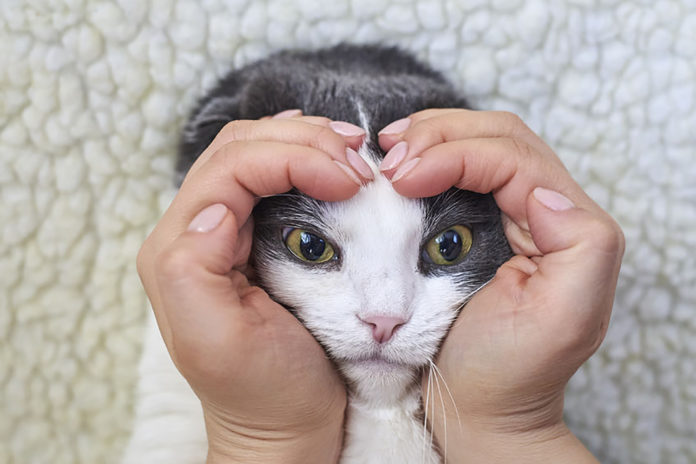
Claudia Wascher, Anglia Ruskin University
It’s not only humans who feel emotions. In his 1872 book, The Expression of the Emotions in Man and Animals, Charles Darwin described a range of “innate” and “evolved” emotions in dogs, cats, chimpanzees, swans and other non-human animals.
But animals can’t verbally report their emotions, and humans often misread how an animal’s feeling, which can lead us to make them feel worse despite the best of intentions. That’s because we tend to anthropomorphise animals, seeing in them human expressions and emotions which cloud our understanding of how they’re really feeling.
Learning how animals perceive emotions is important. Understanding what makes them stressed or unhappy can inform how we approach animal welfare in zoos, sea life centres and farms, as well as helping us treat our pets with more compassion.
Perhaps poetically, researchers have turned to animals’ hearts to learn more about their emotions, as detailed in my recent paper. By measuring how animal heart rates fluctuate in response to different situations, we’re getting closer to understanding how and when animals feel.
In both humans and animals, an increase in emotional arousal from low to high can be quantified by an increase in heart rate, measured in beats per minute (bpm). Taking these measurements – with wearable heart rate belts, implanted transmitters or artificial eggs – provides a rare window into the emotional worlds of animals.
The heart rate of animals increases rapidly when they have aggressive encounters such as fights, and decreases during friendly interactions such as grooming. For example, in greylag geese, the mean heart rate during aggressive interactions increases from 84 bpm during rest to 157 bpm. Heart rate increases more when geese are interacting with a more dominant opponent, showing that geese are more emotionally aroused during a confrontation they’re more likely to lose.

This might be simply explained by an increase in physical activity during fights, except that we see the same effect in geese that are merely observing events in their environment, for example when they’re watching other geese fighting. This heart rate increase reflects emotional arousal, not physical activity.
Most remarkably, my research has shown that geese’s heart rate increased more when their partner or a family member was involved in aggressive encounters, compared to unrelated individuals. This suggests that greylag geese are capable of what’s called emotional contagion – when an individual is affected by the emotions of other individuals.
A similar effect has even been observed in dogs and their owners. A study found that heart rate in dogs increases when it increases in their owners, and that this effect was stronger the longer the human had owned the dog. This suggests that their emotional states are synchronised, despite belonging to different species.
Hearts and minds
Heart rate also provides insights into the cognitive abilities of animals. Chimpanzees, for example, have different mean heart rates, depending on whether they’re shown pictures of aggressive, friendly or unfamiliar chimps. This suggests that they recognise different emotional expressions.
Other studies have found that a number of species – for example goats, horses, cattle and European starlings – show increased heart rate when engaging in a learning task, revealing that they’re emotionally aroused by the task.
Read more: Horses can recognise themselves in a mirror — new study
Heart rate is a particularly revealing measure when animals don’t express their emotions through any behavioural response. American black bears, for instance, don’t behave differently when drones are flying over them. But scientists have found the presence of a drone does increase their heart rate, which shows that the bears are disturbed – even if they’re not showing it.
And that’s the key reason why monitoring animal heart rates can help improve their welfare: by showing us when they’re stressed. This could help pet owners to understand when certain situations stress their pets, and what they can do to reduce it.
We know for instance that many pet dogs are stressed by fireworks. Heart rate studies have found that the presence of the dog’s owner helps offset some of this stress. We’re less aware that cats, according to one study, actually feel more stressed when they’re stroked. By looking at cats’ heart rates, we could understand which types of strokes they’re most and least fond of.
In kennelled dogs, meanwhile, a study has shown that auditory and olfactory stimulation (playing music and smelling lavender) decreased their heart rate, indicating stress reduction. The same could be true of animals in zoos. And developing an understanding of how wild animals like black bears react to human disturbances could help us to minimise the effect of human activity on wildlife.
Wild at heart
Although heart rate allows us to quantify the level of emotional arousal in animals, it doesn’t provide information about whether this emotional arousal is received as positive or negative. We can only assume that a fight is perceived negatively, and courtship positively.
Still, we can use heart rate as a measure to understand how excited our pets are in certain situations. We can learn how they feel about different styles of music or different flavours of food. Given that owners appear to accrue cardiovascular benefits from their pets – in reduced blood pressure, for example – we owe it to our animals, and those in the wild, to listen to their hearts, helping foster a more compassionate relationship between humans and animals.
Claudia Wascher, Senior Lecturer, Animal and Environmental Biology, Anglia Ruskin University
This article is republished from The Conversation under a Creative Commons license. Read the original article.











